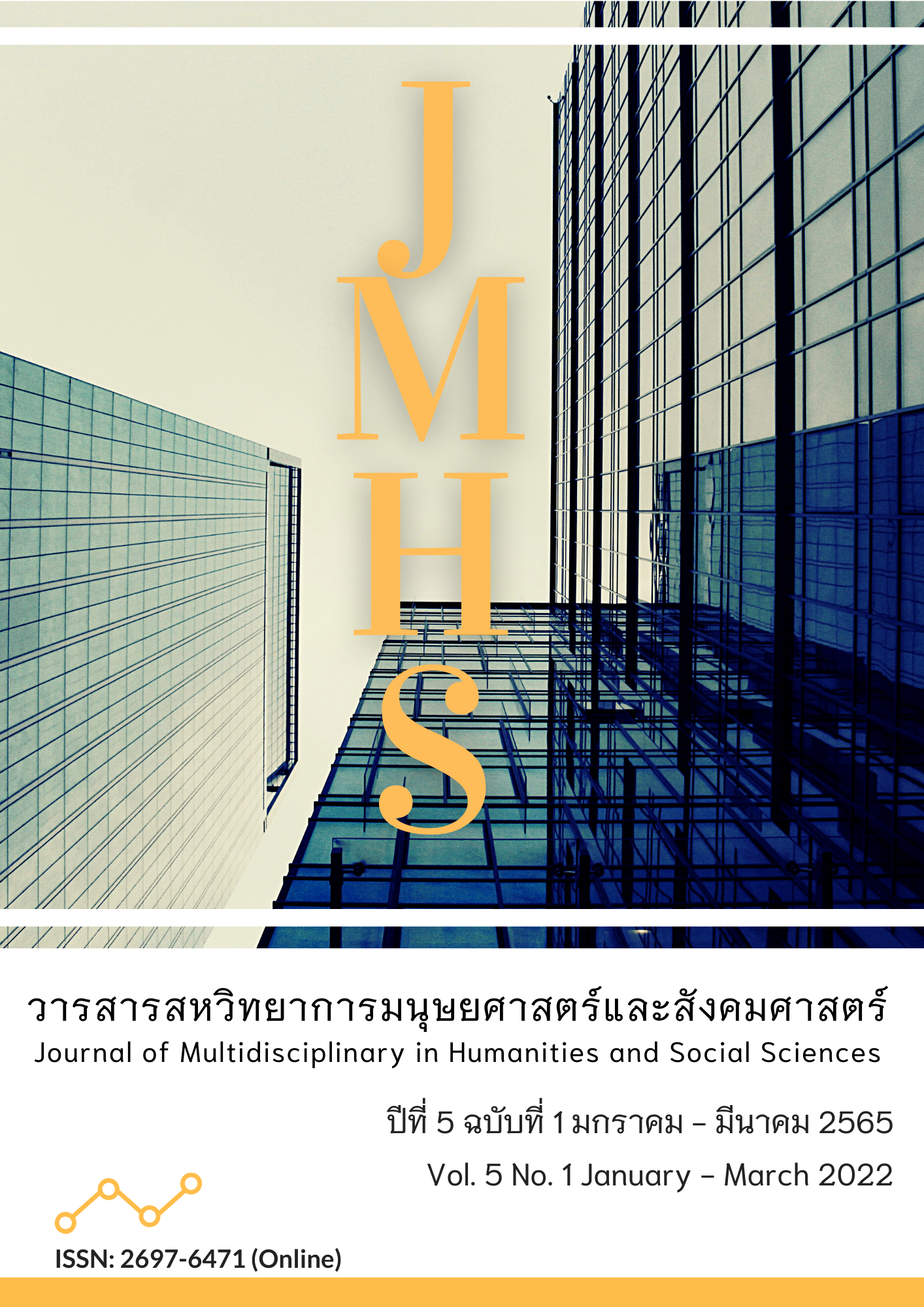Roles of Women in the Culture of Kui Ethnic Group in Sisaket Province
Main Article Content
Abstract
The purpose of this research was to study the roles of women in the culture of the Kui ethnic group in Sisaket province. The target groups used in this research were four Kui communities in Sisaket province by using purposive sampling. Informants consisted of community leaders, female leader, and cultural leaders were selected, Data were collected using an in-depth interview of 12 knowledgeable people, focus group of three times, and a summary as descriptive. It was found that the Kui community has a character as a closed society and believes in Buddhism, mixed with belief in ancestor ghosts and grandfather ghosts. Roles on the rites, Kui people believed that women could link the human world and the spirit world together through rites. So, a woman takes a role in inheriting tradition and belief in community. Roles on the family, woman will be background and story heir in family and community of herself, descendant by bringing up a child and watching over the house. Roles in society, women will be rites assistants and rites in the community. Roles on the economy, women will have roles in supporting production and selling products. Roles of Kui women begin to change more and more in the period of regime change. Kui women are being educated more and more. They have changed their roles in all aspects. Besides, as housewives, they still have roles in the cultural inheritance in their community, being community leaders, serving under the crown, trading, self-employed businesses and they can go out to work outside. Although their roles have been changing, but what still indicates the identity of Kui women is obviously giving precedence to the system of relatives, rites, belief, and intellect inherited from their ancestor, which can reflect the roles of Kui women very well.
Article Details

This work is licensed under a Creative Commons Attribution-NonCommercial-NoDerivatives 4.0 International License.
Views and opinions appearing in the Journal it is the responsibility of the author of the article, and does not constitute the view and responsibility of the editorial team.
References
กาญจนา แก้วเทพ. (2553). ศาสตร์แห่งสื่อและวัฒนธรรมศึกษา. กรุงเทพฯ: เอติสันเพรส โปรดักส์.
กุหลาบ มัลลิกะมาส. (2537). ความรู้ทั่วไปเกี่ยวกับคติชนวิทยา เอกสารการสอนชุดวิชาภาษาไทย 8. (พิมพ์ครั้งที่ 3). กรุงเทพฯ: มหาวิทยาลัยสุโขทัยธรรมาธิราช.
งามพิศ สัตย์สงวน. (2543). หลักมานุษยวิทยาวัฒนธรรม. กรุงเทพฯ: คณะรัฐศาสตร์ จุฬาลงกรณ์มหาวิทยาลัย.
ชลิดาภรณ์ ส่งสัมพันธ์. (2544). ภาษาเพศ: อำนาจ เรื่องทางเพศกับพหุนิยมทางจริยศาสตร์. เชียงใหม่: คณะสังคมศาสตร์ มหาวิทยาลัยเชียงใหม่.
จิตร ภูมิศักดิ์. (2544). ความเป็นมาของคำสยาม ไทย ลาวและขอมและลักษณะทางสังคมของชนชาติ ฉบับสมบูรณ์. (พิมพ์ครั้งที่ 5). กรุงเทพฯ: ศยาม.
ใจสคราญ หิรัญพฤกษ์. (2540). กลยุทธ์ในการเสริมสร้างความเสมอภาคของบทบาทหญิงชายในการพัฒนาท้องถิ่นทุรกันดารอีสานใต้. กรุงเทพฯ: มหาวิทยาลัยเกษตรศาสตร์.
ธาวิต สุขพานิช. (2544). 108 เรื่องที่หญิงไทยควรรู้. นนทบุรี: พ๊อพบุ๊คส์ พับบลิค.
พวงเพชร สุรัตนกวีกุล. (2544). มนุษย์กับสังคม. กรุงเทพฯ: สำนักพิมพ์มหาวิทยาลัยเกษตรศาสตร์.
ไพฑูรย์ มีกุศล.(2545). การพัฒนาสังคมของกลุ่มชาติพันธุ์เขมรป่าดง. นนทบุรี: มหาวิทยาลัยสุโขทัยธรรมาธิราช.
รฐษร ศรีสมบัติ. (2559). บทบาทของผู้หญิงเมี่ยนกับการสร้างอัตลักษณ์ในบริบทความเชื่อแบบประเพณีและเศรษฐกิจสมัยใหม่(ดุษฎีนิพนธ์ปรัชญาดุษฎีบัณฑิต). มหาวิทยาลัยแม่ฟ้าหลวง.
ปรานี วงษ์เทศ. (2543). สังคมและวัฒนธรรมในอุษาคเนย์. กรุงเทพฯ: เรือนแก้วการพิมพ์.
วารุณี ภูริสินสิทธิ์. (2545). สตรีนิยม: ขบวนการและแนวคิดทางสังคมแห่งศตวรรษที่ 20. กรุงเทพฯ: โครงการจัดพิมพ์คบไฟ.
วิลาศ โพธิสาร. (2551). การปรับตัวทางสังคมของชาวกูยในบริบทพหุวัฒนธรรมเขตอีสานใต้(ดุษฎีนิพนธ์ปรัชญาดุษฎีบัณฑิต). มหาวิทยาลัยศิลปากร.
Seidenfaden, E. (1952). The Kui People of Cambodia and Siam. Journal of Siam Society, 39(2), 144-180.


